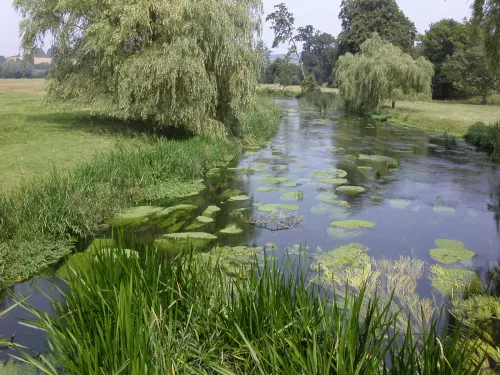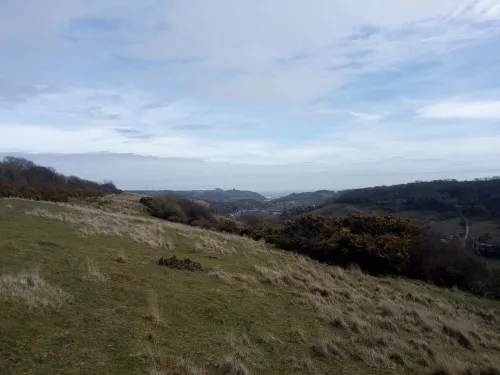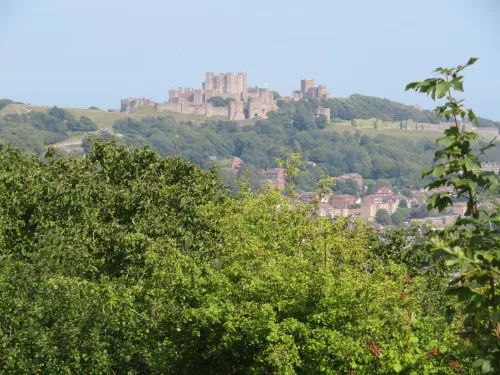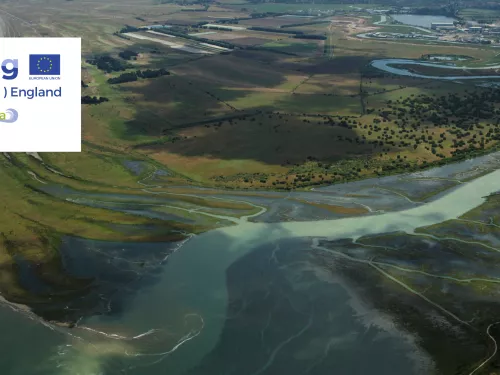
Wilder Blean Project
We have introduced European bison to help restore UK wildlife and tackle the climate crisis.

With the support of various funders, partners and communities, we're working across the county on numerous projects to achieve our Wilder Kent Strategy of 30 x 30. Find out more about some of our projects past and present.
Our #WilderKent 2030 strategy aims to increase wildlife abundance and climate resilience across 30% of Kent's land and sea.
To achieve this, we will defend and restore with nature-based land management practices and the return of missing species, whilst giving wildlife a voice through our campaigns and communications.
With the support of various funders, partners and communities, we're working across the county on numerous projects to achieve this. By working together, we believe that we can save and restore our natural world.
There is always room for you to get involved and get up close to nature, by joining as a member, attending an event and visiting our reserves to volunteering.

We have introduced European bison to help restore UK wildlife and tackle the climate crisis.

The Wilder Blean is our vision for an iconic landscape, where wilderness can be experienced, and nature is at the heart of healthy communities with a thriving green economy.

In July 2023, as a result of four decades of chalk grassland restoration, these charismatic birds are emerging from our history books and legends. They have returned to our skies, thanks to a partnership between Kent Wildlife Trust, Wildwood Trust and…

Farmers working together to protect and restore on farm habitats and increase the amount of land using nature-friendly farming will play a vital part in recovering nature in Kent.

Kent Wildlife Trust and Wildwood Trust, in collaboration with Sussex Wildlife Trust, Ashdown Forest and Forestry England, are assessing the possibility of restoring pine martens to the South East.

We ask citizen scientists all over the country to measure insect splats on their vehicle number plates as a measure of insect abundance. In previous survey years, we have made significant strides in understanding the challenges facing our insect…

There are up to 23 million gardens and over 62,000 urban green spaces in the UK. If we work together and create wildlife-friendly gardens and green spaces, imagine the contribution we could make to the climate crisis!

We will be carrying out conservation management and access improvement works across Hothfield Heathlands. The main aim of the ‘Precious Peatlands’ project will be the restoration of peat bog.

We are asking volunteers to monitor and collect invaluable information about river health by adopting a stretch of river and collecting data on water quality, habitat conditions and pollution sources.

The Kent and Medway Road Verge Project, established in 1994, works to identify, protect and manage road verges which contain threatened habitats or wildlife. These are marked by special signs.

Local Wildlife Sites are areas which are important for the conservation of wildlife in the administrative areas of Kent and Medway.

The High Downs project is an exciting three-year initiative to improve the countryside environment between the Elham and Petham valleys, which sit within the Kent Downs (designated as an Area of Outstanding Natural Beauty, AONB).

The Dover Downlands Project aims to increase and improve chalk downlands and associated biodiversity in the Dover area of the Kent Downs Area of Outstanding Natural Beauty (AONB).

Thanks to your incredible support of our Uncovering Coombe Down appeal, a late surge of donations saw us fly past the £69,800 target. We are now putting our plans into action to restore this high value piece of chalk grassland.

Partnership working has been essential in developing the project and a wide range of partners provided input into the project to date. That support continues as we go through the ‘delivery stage’ of the project.

The Fifth Continent Landscape Partnership Scheme seeks to deliver a number of exciting projects based around three key themes to Restore, Rediscover and Reclaim Romney Marsh.

This exciting new project will give everyone the chance to learn more about the astonishing wildlife that lives around Kent’s shores.

Our H2O Source2Sea Project is using Nature-based Solutions to address water quality and quantity issues in Stour catchment (Kent) and Authie catchment (France). Partners include CPIE, KCC, & Nausicaa.

The Bee Roads work forms part of a wider 3-year project called 'Making a Buzz for the Coast'. This is led by Bumblebee Conservation Trust in partnership with Kent Wildlife Trust and covers 135 miles of Kent's coastline from Dartford to Deal.

Down To Earth, which is based across Romney Marsh, centres around improving the well-being of women through being active in nature.

An exciting 3-year project based at Cromer’s Wood in Sittingbourne funded by the National Lottery Heritage Fund reconnect people to the crafts and skills of traditional woodland management that benefit both wildlife and people.

Nature’s Sure Connected was a National Lottery Heritage Fund project led by Kent Wildlife Trust that developed a practical framework for evidencing landscape-scale outcomes of landscape-scale conservation.

The Project aims to conserve the ancient stonework and historic fortifications of Dover Castle while also supporting the species rich chalk grassland on the surrounding landscape.

Grassification is a European subsidised project investigating the possibilities of these 'dreams' and more as economically profitable business cases.

Ofgem U-turn for Isle of Grain power project leaves conservationists asking National Grid to “Rethink Sea Link” and dump environmentally damaging plans for Pegwell Bay.

Kent Wildlife Trust will work with Amazon’s cloud computing arm towards the international launch of ‘Bugs Matter’ – a citizen science app to monitor trends in insect populations.

A popular wildlife visitor centre for families and wildlife enthusiasts is set to temporarily close for refurbishment.